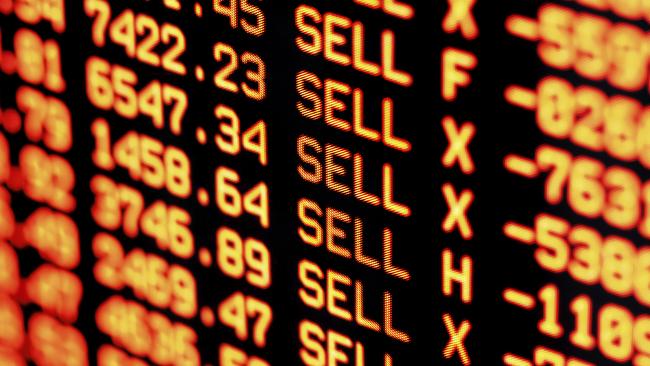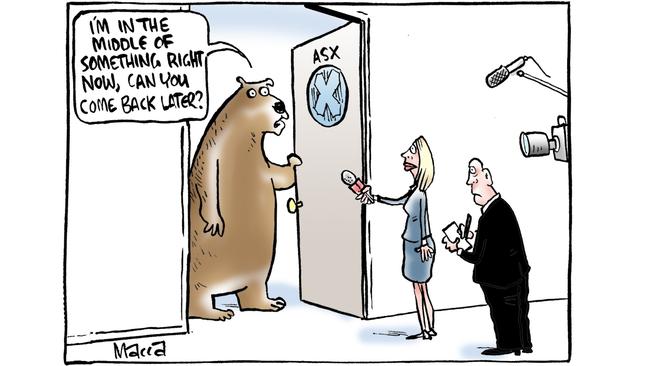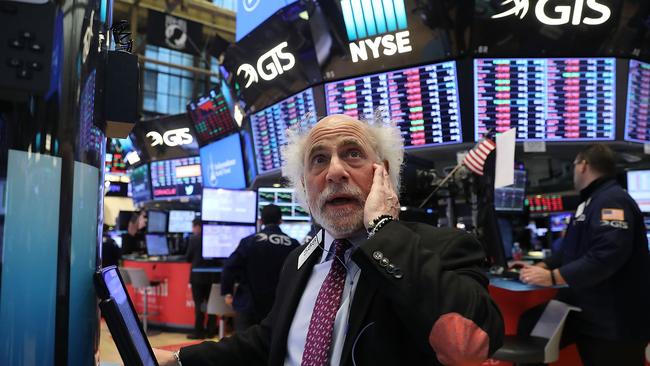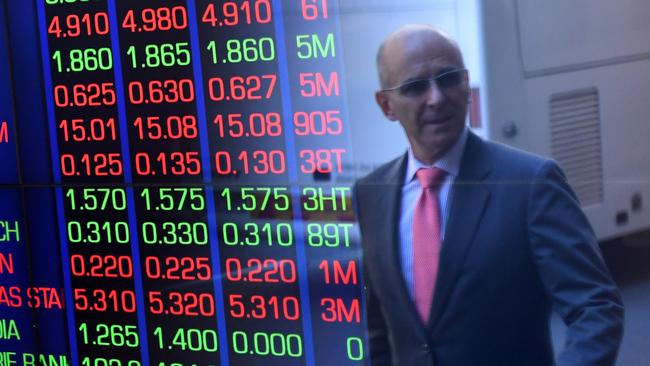ASX plunge: Aussie stock market notches worst week in two years
THE Australian stock market has notched its worst week in two years with jittery investors renewing their sell down as Wall Street plunges into correction territory.
Business
Don't miss out on the headlines from Business. Followed categories will be added to My News.
THE Australian stock market has notched its worst week in two years with jittery investors renewing their sell down as Wall Street plunges into correction territory.
Australia’s key index, the ASX 200, dropped another 0.9 per cent on Friday — cancelling out a two-day rebound — following another heavy bout of selling on Wall Street.
Signs that interest rates in the US will rise quicker than many investors have expected have sparked turmoil that has spread across the globe.
TERRY MCCRANN: WHAT TRAUMA? IT WILL FADE TO BLACK
PETER TAYLOR: WHY WALL STREET PLUNGE ISN’T SO BAD
WHY AFIC CHIEF ROSS BARKER HAS PLAYED THE LONG GAME
It means the total amount stripped from the value of the stock market in this week’s rout is now at $98 billion — just shy of a 12-figure plunge.
The slump came after US stocks plunged in another dramatic trading session, confirming a correction for the market that has thrown its nearly nine-year bull run off course.

The ASX 200 shed 4.6 per cent for the week, stripping $83 billion from the value of the nation’s biggest listed companies.
It was the heaviest sell-off for any week since the start of 2016, when investors were gripped with fear about the health of China and a plunge in commodity prices.
Unlike that rout, which was centred on resource companies, this week’s sell down has been broadbased with virtually all blue-chip stocks dented.
Australian investors switched to sell on Friday after the Dow Jones Industrial Average — a key Wall Street benchmark index — suffered another 1000-plus point fall on Thursday night.

At 1032.9 points, it was the second-biggest one-day point fall in the index’s history and came after the record 1175-point plunge on Monday night.
The combined hits sent Wall Street into its first market correction — a 10 per cent drop from a peak — in two years.
The Wall Street sell-down has sent investors across the globe scrambling for the exits for much of this week, with Japanese shares down 10 per cent, China off 9 per cent and key eurozone indexes losing about 8 per cent.

The trigger for Friday’s selling was a jump in the interest paid by 10-year US treasury bonds, which are viewed as a key guide to inflation and the likelihood of future interest rate rises.
Investors across the globe are reassessing their outlook on US interest rates following a stream of bullish updates about the strength of the world’s biggest economy.
Healthy jobs numbers and the strongest wage growth in almost a decade prompted many to conclude the US Federal Reserve would lift interest rates faster than previously expected to ward off inflation.
Rising interest rates increase borrowing costs for companies — crimping their profits — and make equities less attractive as an investment compared with fixed-interest products such as term deposits or government bonds.

A decade of falling interest rates and easy money provided by central banks in the US, Europe and Asia has also taken asset prices across the globe to record highs.
As major global economies enjoy a rare period of synchronised growth, the ultra-low rate era appears to be coming to an end.
While central banks in the US and Britain are preparing to hike rates, Reserve Bank governor Philip Lowe this week said he would not lift the nation’s official cash rate from its historic low of 1.5 per cent anytime soon.
AMP Capital chief economist Shane Oliver said while the Australian bourse may still fall further, the sell-off appeared to be a periodic correction rather than the start of a crash.
Dr Oliver said falls in the order of 5 per cent to 15 per cent were normal and, in the absence of a recession, a deep bear market was unlikely.
“We may have seen the worst, but it’s too early to say for sure,” he said.


